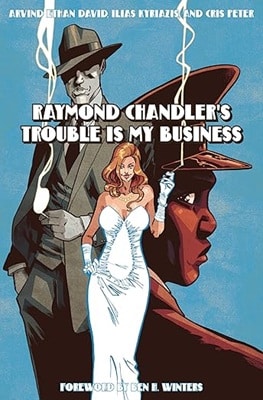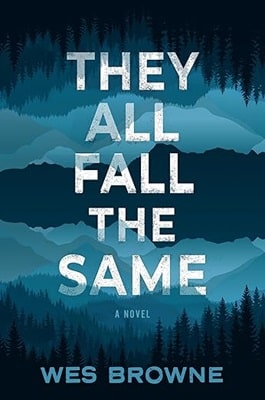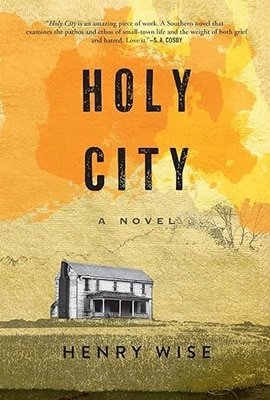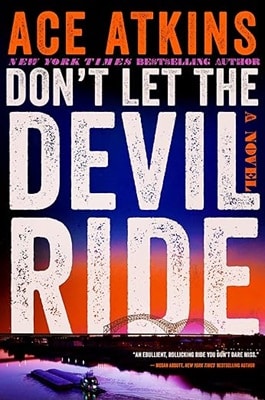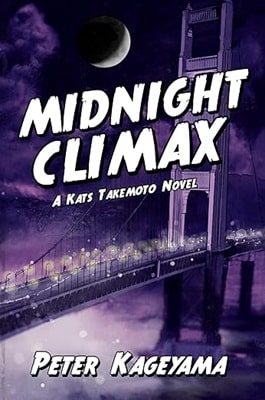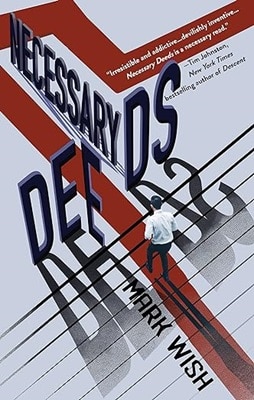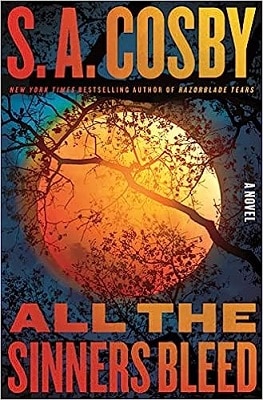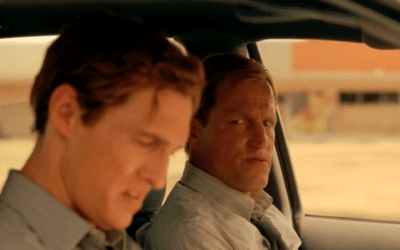Book Review
Trouble Is My Business
It’s 1940s Los Angeles—full of dames, gold diggers, killers, and fixers. Enter Philip Marlowe, the quintessential hard-boiled, hard-drinking dick—or, as polite society would say, detective.
Whether you’re a longtime fan of Raymond Chandler’s iconic private eye or meeting him for the first time, prepare yourself for his graphic novel reinvention in Arvind Ethan David’s Trouble Is My Business.
This graphic novel reimagines the original story, breathing new life into it for a modern audience while preserving the gritty pulp flavor of 1940s noir. As any strong graphic novel should, the story opens with action—a poignant origin tale, not of Marlowe, but of the femme fatale Miss Harriet Huntress (that name!). As a child, she watched her father jump from a tall building. Now grown, Huntress is more than a sultry, curvaceous redhead—she’s cunning, dangerous, and out for revenge. Her target? The stepson of her father’s enemy, Old Man Jeeter, who stole her father’s fortune and drove him to suicide.
Marlowe is hired by Jeeter to stop Huntress. While tracking her, Marlowe crosses paths with George Hasterman, Jeeter’s chauffeur-fixer-bodyguard. In Chandler’s original, George is mentioned only twice. But in this version, he’s a fully realized character—a sharp, Harvard-educated Black man who returned from war to find that the only job available to him was behind the wheel.
This action-packed adaptation delivers all the twists and surprises of the original, plus a more sympathetic Marlowe: a war veteran, sole survivor of a brutal battle, toughened by trauma, quick with his fists, and unsure of whom to trust. He’s broke and desperate for the money Jeeter offers. The ending twists in so many directions, you might need a murder board to keep it all straight.
The unique illustrations by Ilias Kyriazis and the vivid, masterful coloring by Cris Peter bring the story to blazing life. Panels break and shift—sometimes sliced by a fist, sometimes swirled with yellow cigarette smoke. A mirrored page layout midway through is a stroke of visual genius. Dialogue and thought bubbles are differentiated by distinct colors and fonts for each main character. While some male characters resemble each other a bit too closely, overall the 1940s pulp aesthetic holds strong, the action moves fast, and the colors carry the emotional undertones beautifully.
And, true to noir’s sharp-tongued style, no one writes it better than Raymond Chandler. When a gumshoe says, “trouble is my business,” he’s not kidding.
More Noir
advertisement
Noir Features
The Global Appeal of Noir
Nordic Noir, Southern Noir, and other Noir
Nordic Film Noir
The boundless allure of Nordic Film Noir
From Faulkner to Flynn
Tracing the Evolution of Southern Noir

